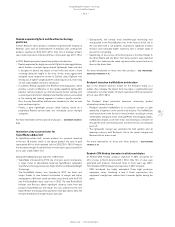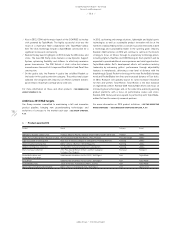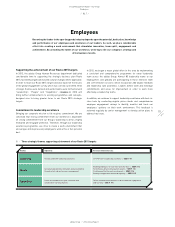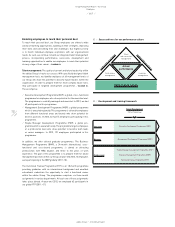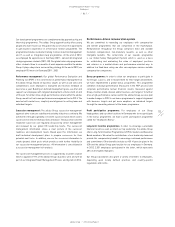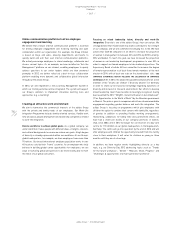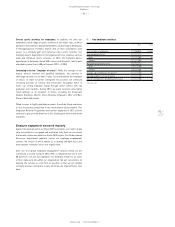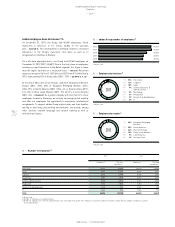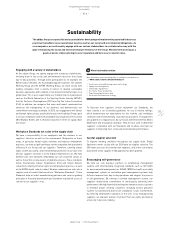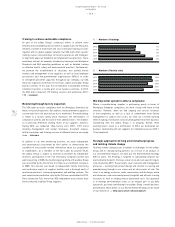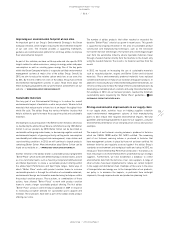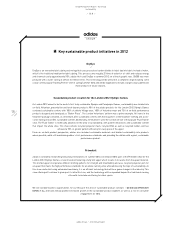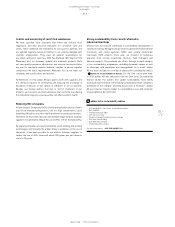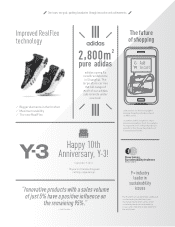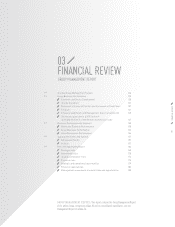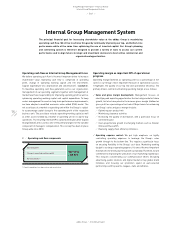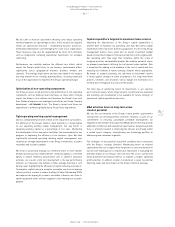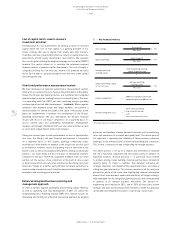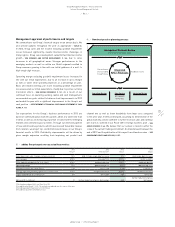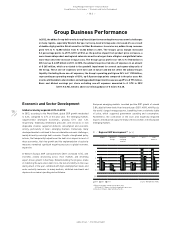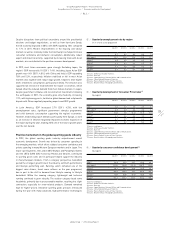Reebok 2012 Annual Report Download - page 141
Download and view the complete annual report
Please find page 141 of the 2012 Reebok annual report below. You can navigate through the pages in the report by either clicking on the pages listed below, or by using the keyword search tool below to find specific information within the annual report.
adidas Group
/
2012 Annual Report
Group Management Report – Our Group
119
2012
Sustainability
/
02.8
/
Improving our environmental footprint at own sites
An important part of our Group’s Environmental Strategy is the Green
Company initiative, which targets reducing the environmental footprint
of our own sites. The initiative provides a supporting framework,
guidance and communication platform for all Group entities to improve
their environmental footprint.
As part of this initiative, we have set Group-wide and site-specific 2015
targets related to carbon emissions, savings in energy, water and paper
consumption as well as sourcing green energy. One of the key goals
within the Green Company initiative is to operate certified environmental
management systems at major sites of the adidas Group. Overall, by
2015, we aim to reduce the relative carbon emissions at our own sites
by 30%. By the end of 2012, ten sites of the adidas Group had certified
environmental management systems in place. Read more about the
Green Company programme and our performance achievements on our
website :
//
WWW.ADIDAS-GROUP.COM/SUSTAINABILITY.
Sustainable materials
One key goal of our Environmental Strategy is to reduce the overall
environmental impact of materials used in our products. We aim to find
materials that reduce waste or have less of an impact throughout their
whole life cycle. The adidas Group has various initiatives in place that
help to achieve its goal to increase the usage of recycled and sustainable
materials.
One example is our participation in the Better Cotton Initiative, which was
co-founded by the adidas Group. We are committed to using 100% Better
Cotton in all our products by 2018. Better Cotton can be described as
sustainable cotton going mainstream, i.e. decreasing negative social and
environmental impacts of growing cotton by cutting water consumption
considerably and addressing pesticide management, crop rotation and
sound working conditions. In 2013, we will continue to launch products
containing Better Cotton. More information about Better Cotton can be
found on our website at :
//
WWW.ADIDAS-GROUP.COM/SUSTAINABILITY.
Another initiative is the adidas brand’s sustainable product programme
“Better Place”, which works with different product creation teams, as well
as cross-functional teams such as Sourcing, Corporate Communication
and Global Operations to create a sustainable product offering within
the adidas Sport Performance and Sport Style ranges. Some ways in
which “Better Place” works with product creation teams to increase
sustainable products is through the utilisation of sustainable materials,
environmental design and innovative manufacturing techniques within
the product creation process. These actions, or combinations of these
actions, have allowed “Better Place” to work with product creation
teams to create a larger sustainable product offering. The first adidas
“Better Place” products were introduced globally in 2009 in response
to increasing consumer demand for sustainable sports apparel and
footwear. These products have been a part of the adidas brand product
offering ever since.
The number of adidas products that either reached or exceeded the
baseline “Better Place” criteria has grown in recent years. This growth
is supported by ongoing innovation in the area of sustainable product
construction and manufacturing techniques, such as the low-waste
hot-runner injection technologies. Hot runners are a technology brought
over from the automotive industry, where injectable materials travel
through a heated channel directly from the machine to the mould, only
using the needed material. The result is no material overflow from the
mould.
In 2012, we focused on increasing the use of sustainable materials
such as recycled polyester, organic and Better Cotton and bio-based
materials. These environmentally preferred materials have replaced
conventional materials in many of our footwear and apparel products. In
addition to increasing the use of environmentally preferred materials, we
strive to continuously increase the range of more sustainable products by
developing sustainable product solutions and using innovative materials.
For example, in 2012, all our footwear products reached the minimum
sustainability levels required by the “Better Place” guidelines
/
KEY
SUSTAINABLE PRODUCT INITIATIVES IN 2012.
Driving environmental improvements in our supply chain
In our supply chain, activities focus on helping suppliers establish
sound environmental management systems at their manufacturing
plants to best reduce their negative environmental impacts. We have
guidelines and training programmes in place for our suppliers, using the
environmental performance of our own production sites as best practice
examples.
The majority of our footwear sourcing volume is produced in factories
which are OHSAS 18000 and/or ISO 14001 certified. The remaining
part of our footwear sourcing volume is produced in factories that
have management systems in place but have not yet been certified. All
footwear factories are regularly assessed against the adidas Group’s
standards on environment and workplace health and safety. In 2012, we
introduced “Environmental Key Performance Indicators” that allow us to
track the progress of environmental efforts undertaken by our strategic
suppliers. Furthermore, we have established a database to collect
environmental data from the factories of our core suppliers. A range of
other activities have been implemented to reduce our carbon footprint
in the supply and distribution chain. Examples of these are in the areas
of transportation and energy use. In the transportation of our products,
our policy is to minimise the impacts, in particular from airfreight
shipments, through improved order and production planning tools.


